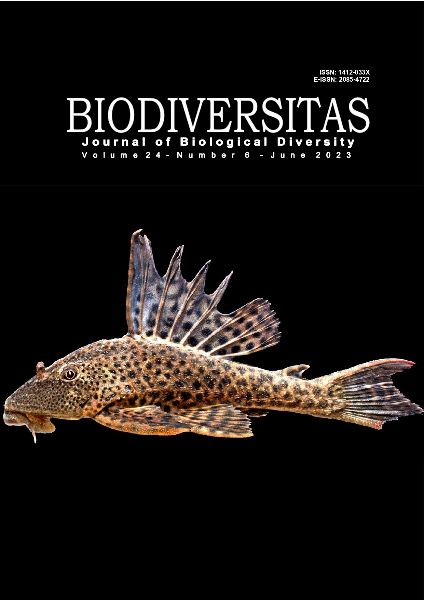Consortia of endophytic bacteria for controlling Colletotrichum gloeosporiodes causing anthracnose disease in chili plant
##plugins.themes.bootstrap3.article.main##
Abstract
Abstract. Nurbailis, Yanti Y, Resti Z, Djamaan A, Rahayu SD. 2023. Consortia of endophytic bacteria for controlling Colletotrichum gloeosporiodes causing anthracnose disease in chili plant. Biodiversitas 24: 3503-3511. Anthracnose disease caused by Colletotrichum gloeosporioides is the main disease in chili plants, which reduces yields by up to 90%. Using a consortium of endophytic bacteria is an alternative way to control the disease at a low cost and is environmentally friendly. The aim of the study was to obtain the best consortium of endophytic bacteria to control anthracnose caused by C. gloeosporioides and improve the growth and yield of chili plants. This research was arranged in an experimental method consisting of two stages, namely (i) compatibility test between endophytic bacterial consisting of 28 species, and (ii) test of the endophytic bacterial consortium ability to control anthracnose in chili using a Completely Randomized Design (CRD) with 14 treatments and provided with 3 replications. All treatments of endophytic bacterial consortium showed the potential to suppress anthracnose disease caused by C. gloeosporioides and improve the growth and yield of chili plants. The best bacterial consortium treatment in suppressing the development of anthracnose disease by C. gloeosporioides and increasing the growth and yield of chili plants was the consortium B. cereus SNE 2.2 + B. cereus TLE 1.1 with dis-ease severity of 0.00%, plant height of 58.33 cm and fruit weight of 208.97 g.

